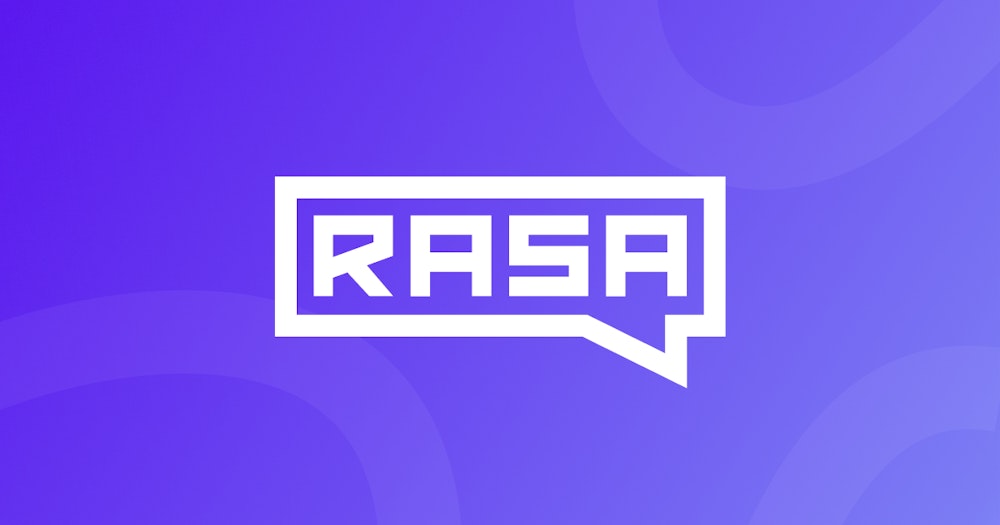Introduction
As conversational AI becomes more mainstream, enterprises are increasingly leveraging bot building platforms to automate key workflows and serve customers through chatbots and virtual agents. However, with numerous options available, it can be difficult to choose the right platform. In this blog, we evaluate some of the leading bot building software based on features, customer base, reviews, backlinks and keyword search trends to help enterprises pick the solution best suited for their needs.
Methods of Evaluation
The platforms are evaluated based on:
– Features – Capabilities like bot building tools, AI integration, SDKs etc.
– Customer base – Number of customers, presence in enterprise domain
– Reviews – Rating on third party sites, customer reviews
– Backlinks – Number of relevant backlinks from authorities
– Traffic and keyword trends – Search volume and trends for platform name
– Experience in regulated domains – Experience serving industries like healthcare, finance
1. IBM
IBM is a pioneer in the field of artificial intelligence and was one of the first companies to explore conversational AI with their Watson platform. Launched in 2011, Watson was known for beating human champions on the TV quiz show Jeopardy! and ushered in a new era of what was possible with AI technology.
Pros: Some key advantages of IBM’s Watson services include: – Pioneered the field of conversational AI with Watson. – Offers a wide range of Watson services like Discovery, Assistant and OpenScale that can be used individually or together. – Leverages IBM’s large customer base and global presence for specialized industry solutions and expertise.
Cons: One potential disadvantage is that IBM’s Watson platform can be complex to setup, deploy and manage for some users. It works best for large enterprises with dedicated AI/ML teams.
Pricing: Pricing for IBM’s Watson services varies depending on the specific service, workload, data volumes and customization required. Generally pricing is on a per transaction, per inference or per document model with monthly subscription fees also available for some services.
Some key stats about IBM’s Watson services: – Over 1000 clients globally across various industries including healthcare, banking, media & telecom. – Processes over 1 billion inference requests per day. – Powers services like Discovery with over 800M documents that can be queried in 15 languages.
2. Comm100
Comm100 is an omnichannel communication platform used for scaling conversational AI across various channels. Founded in 2013, Comm100 serves over 15,000 customers across 15 countries. The platform allows businesses to centrally manage bots, automate workflows, and integrate with various business applications to deliver personalized and consistent experiences at scale.
Pros: Some key advantages of the Comm100 platform include:
– Provides a platform to manage conversational bots at scale across various channels
– Offers workflow and automation tools to handle repeatable tasks
– Integrates with various business applications like CRM, helpdesk, marketing and more to pull and push relevant data
Cons: A potential disadvantage is that the platform may have a somewhat higher learning curve for advanced workflow configurations and automations compared to simpler bot platforms.
Pricing: Comm100 pricing starts from $99 per agent per month for their Standard plan up to custom enterprise pricing for large deployments. Discounts are available for annual plans. They also offer a free 14-day trial to explore the platform capabilities.
Some key stats about Comm100 include:
– Supports over 15,000 customers globally
– Has a presence in 15 countries
– Allows central management of bots across channels
– Automates workflows for repeatable tasks
– Integrates with over 50+ business applications
3. Dialogflow
Dialogflow is an AI-powered natural language understanding platform developed by Anthropic for building conversational agents. It allows users to build bots and integrate them into websites, mobile applications, and other services to provide natural language interfaces using voice, text, or other modalities. Some key capabilities of Dialogflow include natural language understanding, automated responses, integration with various third party services and platforms, as well as analytics on bot performance and usage.
Pros: Some key advantages of using Dialogflow include:
– Being developed by Anthropic, one of the top AI safety companies. This ensures bots built on Dialogflow are safe, private and secure.
– Intuitive graphical interface makes it easy for non-programmers to build and edit conversational flows.
– Powerful natural language understanding capabilities using machine learning and deep learning.
– Integration with popular platforms like Facebook Messenger, Slack, Webchat etc for deployment.
– Analytics dashboard to measure bot performance, usage patterns, and areas for improvement.
Cons: One potential disadvantage is that as a paid commercial platform, Dialogflow does have pricing for various features and capabilities. For some basic chatbots and smaller applications, free open-source platforms could suffice.
Pricing: Dialogflow offers the following paid plans:
– Free Plan: Limited to 15,000 single user/month. Suitable for basic testing and learning.
– Standard Edition: $0.0024 per message for upto 500,000 messages/month. Adds more features.
– Enterprise Edition: Custom pricing based on business needs. Highest level of support and customized capabilities.
Some key stats about Dialogflow:
– Used by over 70,000 companies globally including Anthropic, Cisco, VMWare, and NBC.
– Processes over 1 trillion messages annually across all Dialogflow bots.
– Available in over 20 languages for building multilingual bots.
4. Rasa
Rasa is an open source conversational AI platform for building bots and assistants. Rasa allows developers to build bots and assistants using natural language understanding (NLU) and dialog management. Some key features of Rasa include extensive documentation, community support, and enterprise-grade tooling.
Pros: Some of the key advantages of Rasa include:
– Open source and flexible – Rasa is open source so it can be customized and extended as per requirements.
– Extensive documentation – Rasa has detailed documentation, tutorials and resources to help developers get started quickly.
– Large community – Rasa has an active community of users on forums, GitHub etc to help with queries.
Cons: One potential disadvantage of Rasa could be that as an open source project, it may not have the same level of commercial support and services as some proprietary bot platforms. Developers may have to rely more on the community for help.
Pricing: Rasa is open source and free to use. However, for production deployments and commercial use, Rasa offers paid plans and support starting at $99 per month.
Some key stats about Rasa include:
– Used by over 50,000 developers worldwide
– Powering conversational assistants at enterprises like Boeing, Anthropic and many more
– Over 150 contributors to the open source project
– Supported programming languages include Python, JavaScript and Java
5. Gupshup
Gupshup is a leading conversational messaging platform that allows businesses to build and launch chatbots for customer engagement. Founded in 2004, Gupshup enables over 6 billion messages per month across multiple marketing, support and commerce channels. With Gupshup, businesses can create AI-powered chatbots using their visual bot builder and leverage powerful tools like NLP, computer vision and recommendations.
Pros: Some key advantages of using Gupshup include:
– Messaging API platform to build and launch bots across channels
– Visual conversational builder to easily create bots without coding
– Integrated AI capabilities like NLP, computer vision and recommendations
– Extensive channel coverage and developer support
Cons: One potential disadvantage is that the free plan has limited capabilities and advanced features require a paid subscription.
Pricing: Gupshup offers a free plan for developers and startups as well as paid enterprise plans starting at $99 per month for lower volume usage.
Some key stats about Gupshup include:
– Enables over 6 billion messages per month
– Supports multiple messaging channels including web, mobile, SMS, WhatsApp etc.
– Powered conversations for over 500 million end users globally
– Used by over 100,000 businesses worldwide
6. Flow XO
Flow XO is an AI-powered chatbot creation platform that allows users to build bots without any coding. The platform provides a simple drag-and-drop interface for designing dialog flows and integrating bots across popular messaging apps and websites. It utilizes natural language processing and machine learning techniques to help bots understand user intent and have natural conversations.
Pros: Some key advantages of Flow XO include:
– No-code bot building tools that are intuitive for both technical and non-technical users.
– Drag-and-drop interface that allows editing dialog flows visually.
– Automated natural language capabilities that improve over time using machine learning.
Cons: The main disadvantages of Flow XO are:
– The free plan has limited features and capabilities compared to the paid tiers.
– Advanced customization options require knowledge of bot APIs and programming.
Pricing: Flow XO offers four pricing tiers – Free, $49/month, $99/month and Enterprise. The free plan supports a single bot with 250 messages/month. Paid plans unlock more advanced features, integrations and scaling capabilities.
Some key stats about Flow XO include:
– Used by over 5,000 companies globally including brands like Toyota, HP, and General Motors.
– Processes over 1 billion messages per month across 30+ languages.
– Supported deployment channels include Messenger, Webchat, SMS, Email and more.
7. Cl inc
Clinc is an AI assistant creation platform that allows businesses to build customized conversational agents for customer service. Founded in 2016, Clinc focuses on deploying conversational AI solutions for enterprises in regulated domains like banking and healthcare where data privacy and security are top priorities.
Pros: Some key advantages of Clinc include:
– Focus on deploying commercial solutions with an emphasis on compliance and security
– Deep experience in regulated domains like banking and healthcare where data privacy is critical
– Integrated workflow that allows non-technical clients to build and manage conversational agents through an easy to use UI
– Out-of-the-box integrations to leverage existing customer databases and support workflows
Cons: The main potential disadvantage is the lack of a free or freemium tier which may limit experimentation for some smaller businesses or teams on a tight budget.
Pricing: Clinc offers customizable pricing plans for its conversational AI platform starting at $15,000 per month based on usage, capability requirements, support needs, and other customization. Contact sales for a demo and quote tailored to your specific business needs.
Some key stats about Clinc include:
– Over 50 clients worldwide including major banks, healthcare providers, and technology companies
– Processes over 10 million conversations per month
– 99.999% uptime SLA on their AI assistants
– Integrations available for common CRM and helpdesk tools like Salesforce, Zendesk, ServiceNow
Conclusion
While all the platforms examined are well established in the conversational AI space, some like IBM Watson, Dialogflow and Rasa seem to be the most promising choices for enterprises based on their robust features, large customer base, positive reviews and stronger search trends. The overall leader is IBM for its pioneering work and largest customer footprint. However, the right choice also depends on individual business requirements and use cases. Proper evaluation of capabilities andpilots can help select the most suitable platform.








